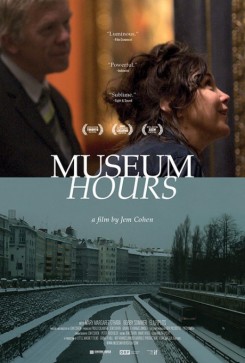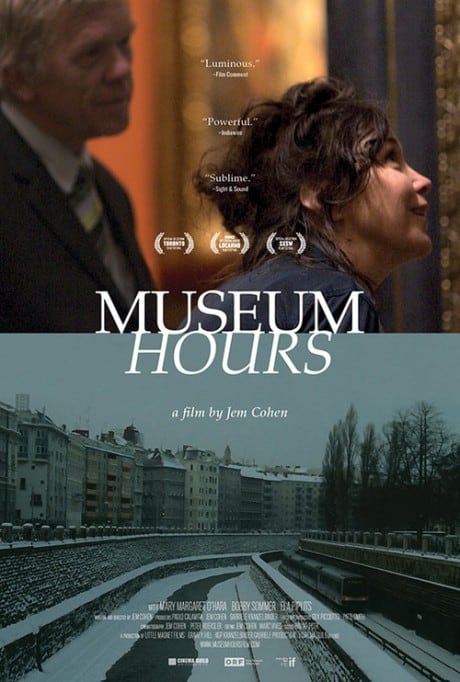“And before I knew it, an hour and a half had slipped pleasantly by,” says Johann, a guard working in a museum in Vienna, while describing the feeling of searching for details in the works of the Renaissance painter Pieter Bruegel. Johann is the narrator of Jem Cohen’s film Museum Hours. He enjoys reflecting on the works of art in the museum even though his job is to watch the people. He befriends Anne (Mary Margaret O’Hara), a Canadian tourist visiting her sick cousin, with whom he discusses the museum’s pieces and, through them, more personal things.
 The film spends as much time out in the city as it does in the museum, and the camera is egalitarian about its subjects. Close-ups of discarded items, Vienna flea markets, and unimportant people never seen again are cut with similar images found in the painting. There are occasional moments that are purely imagined, perhaps by Johann, like the one in which voyeurs appear as unabashedly naked like the various nudes surrounding them.
The film spends as much time out in the city as it does in the museum, and the camera is egalitarian about its subjects. Close-ups of discarded items, Vienna flea markets, and unimportant people never seen again are cut with similar images found in the painting. There are occasional moments that are purely imagined, perhaps by Johann, like the one in which voyeurs appear as unabashedly naked like the various nudes surrounding them.
The movie’s title suggests that the museum is spacially distinct, to the degree that time passes differently inside it. Nevertheless, the film argues that paintings, although somewhat unknowable, are not staid artifacts with no relation to present day life. Such is the case for the repeatedly featured works by Bruegel; his paintings are familiar and snapshot-like.
Cohen gives his audience the full effect of being in a museum, with the faintest sounds, like footsteps, echoes, distant voices, and audio guides. The long, deep shots of spaces that show people flooding in and out let viewers explore images as they please, as with a painting you’ve looked at for a long time but still haven’t finished seeing.


